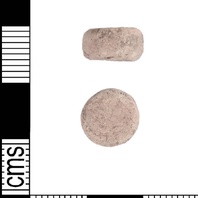
Viking Objects
Round Lead Weight (PUBLIC-2DDD03)
Weights are an important form of evidence for Viking Age commerce and the use of standards across the different economic systems within which Vikings were integrated. Many of the weights discovered, particularly ones in Ireland and those of Arabic type, suggest that a standardized system of weights existed in some areas. These standard weights, alongside standard values of silver, are what allowed the bullion economy of Viking occupied areas to function. A bullion economy was a barter economy that relied on the exchange of set amounts of precious metal in various forms, such as arm-rings or coins, for tradable goods, such as food or textiles. Each merchant would have brought their own set of weights and scales to a transaction to make sure that the trade was conducted fairly.
Read More
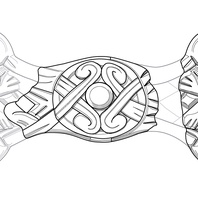
Viking Designs
Drawing of an Equal-Armed Brooch
Drawing of a Viking Age equal-armed brooch based on fragments found at Harworth Bircotes, Nottinghamshire and reconstructed based on parallels from Birka, Sweden. For more information on Scandinavian jewellery in England check out our blog: Brooches, Pendants and Pins: Scandinavian Dress Accessories in England.
Read More
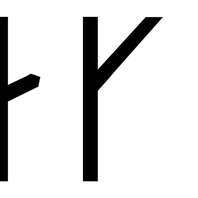
Viking Names
Aki
Áki is probably a diminutive of *ani, an unrecorded word related to Old Norse ái ‘great-grandfather’. The name is frequent in Denmark both independently and in place-names and likely originated in the Danish islands. It is also frequent in Sweden, but does not appear in Norway until about 1300. It is found in one Normandy place-name. The name is well-attested in Lincolnshire and Yorkshire, although some forms may represent the Old English male personal name Acca. Áki is also the first element in the place-name Oakthorpe, Leicestershire
Read More
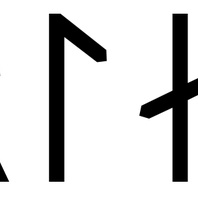
Viking Names
Thorlak
The male name Þorlákr is recorded in a number of Scandinavian runic inscriptions. It is rare in England but is possibly recorded in a minor name Thurlowbooth in Crich, Derbyshire. There is a further East Midlands connection, as its best-known bearer, the Icelandic bishop Þorlákr, studied in Lincoln in the twelfth century.
Read More
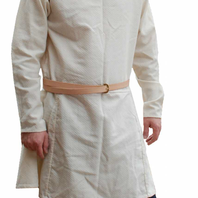
Viking Objects
Reproduction Men’s Clothing Set
The woollen tunic is in white broken diamond twill. Few Viking Age woollen tunics survive intact, but a number of large pieces of skirts and side gores, and arm-hole and sleeve pieces were found at Hedeby, in Denmark. This tunic is made from a composite of all these fragments. The woollen trousers are dark blue/grey herringbone twill. These are based on the archaeological remains of the crotch of a pair of baggy trousers, found at Hedeby, in Denmark, which also appear on a number of Viking Age stone carvings across the Viking world, but particularly in Sweden. The woollen leg-bindingins are yellow herringbone twill, based on original fragments from Hedeby, in Denmark. The vegetable-tanned leather belt, with a ring-and-dot decorated brass buckle, is based on an original found in a male grave (Grave 511), at Repton, Derbyshire.
Read More
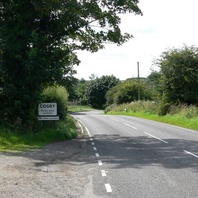
Viking Names
Cosby
The first element of Cosby, in the Guthlaxton Hundred of Leicestershire, is uncertain. It is likely the Old Norse male personal name Kopsi or Kofsi (genitive singular Kofsa) with Kofsa– assimilated to Cossa-. Alternatively the first element could be the Old English male personal name Cos(s)a which appears in such place-names as Cosham, Hampshire, Corsham, Wilshire and Cossington, Leicestershire. The second element is Old Norse by ‘a farmstead, a village’.
Read More
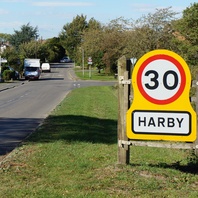
Viking Names
Harby
Harby, in the Framland Hundred of Leicestershire, contains the Old Norse element by ‘farmstead, village’. The first element has been a matter of discussion. The most recent scholarly opinion is that it is most likely from either Old English heorde ‘herdsman’, or Old Norse hjọrð ‘herd’, so either ‘farmstead or village of the herdsmen’ or ‘the herd farm’. For a village of the same name in Nottinghamshire it has also been suggested that the first element is the Old Norse male personal name Herrøðr, though this is now considered less likely.
Read More
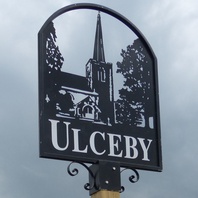
Viking Names
Ulceby
Ulceby, in the Yarborough Wapentake of Lincolnshire, is a Scandinavian compound from the Old Norse male personal name Ulfr and by ‘farm, settlement’. It is noteworthy that the first element has a Scandinavian genitive (a case that indicates relationships or ownership), as in the identical name Ulceby with Fordington and other place-names in Lincolnshire like Braceby, Haceby, Laceby, Rauceby and Winceby, and this survives today.
Read More
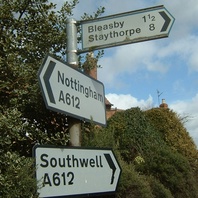
Viking Names
Bleasby
Bleasby, in the Thurgarton Wapentake of Nottinghamshire, was originally Blisetun, probably from the Old Norse male personal name Blesi and the Old English element tun ‘farm, settlement’. It was thus originally a hybrid name, like several others near it, such as Gonalston. By the thirteenth century, the second element had been replaced by Old Norse by ‘farm, settlement’.
Read More
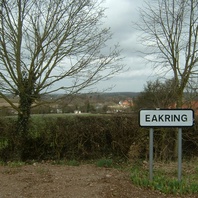
Viking Names
Eakring
Eakring, in the Bassetlaw Wapentake of Nottinghamshire, comes from the Old Norse elements eik ‘oak’ and hringr ‘ring’ and must have been named after a circle of oak trees.
Read More
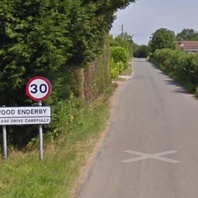
Viking Names
Wood Enderby
The name Enderby probably comes from the Old Norse male personal name Eindriði and the Old Norse element by ‘farm, settlement’. ‘Wood’ was added later to distinguish this part of the settlement from Bag Enderby and Mavis Enderby.
